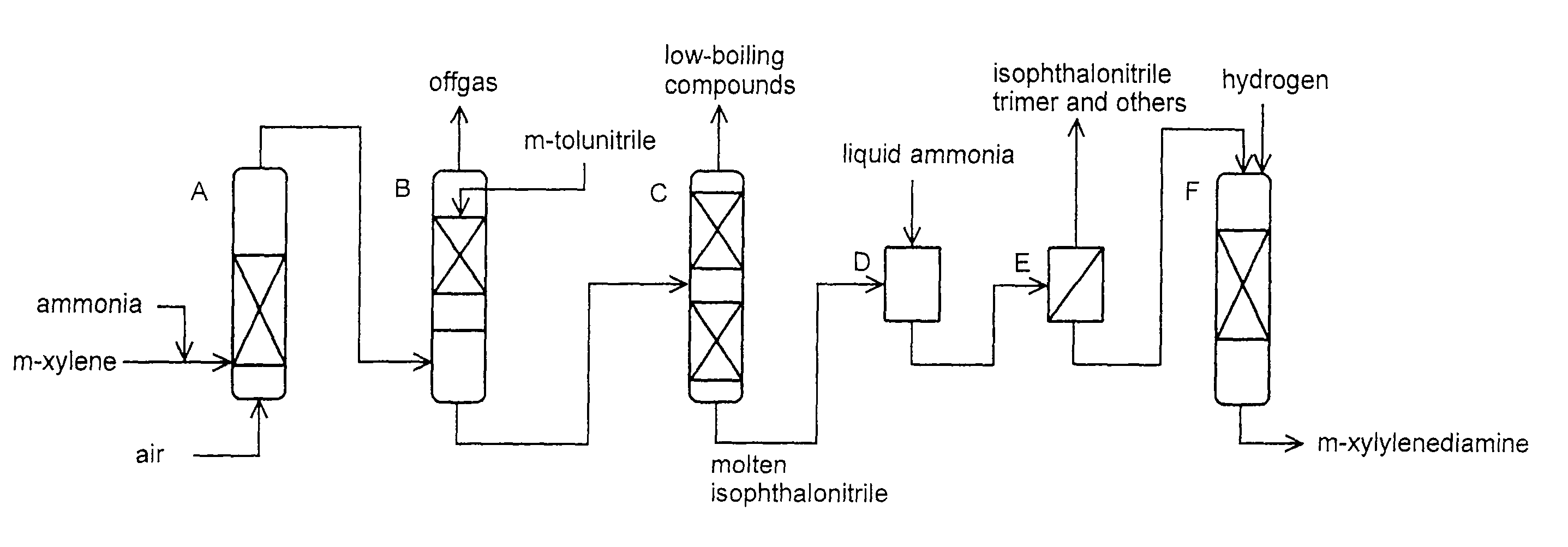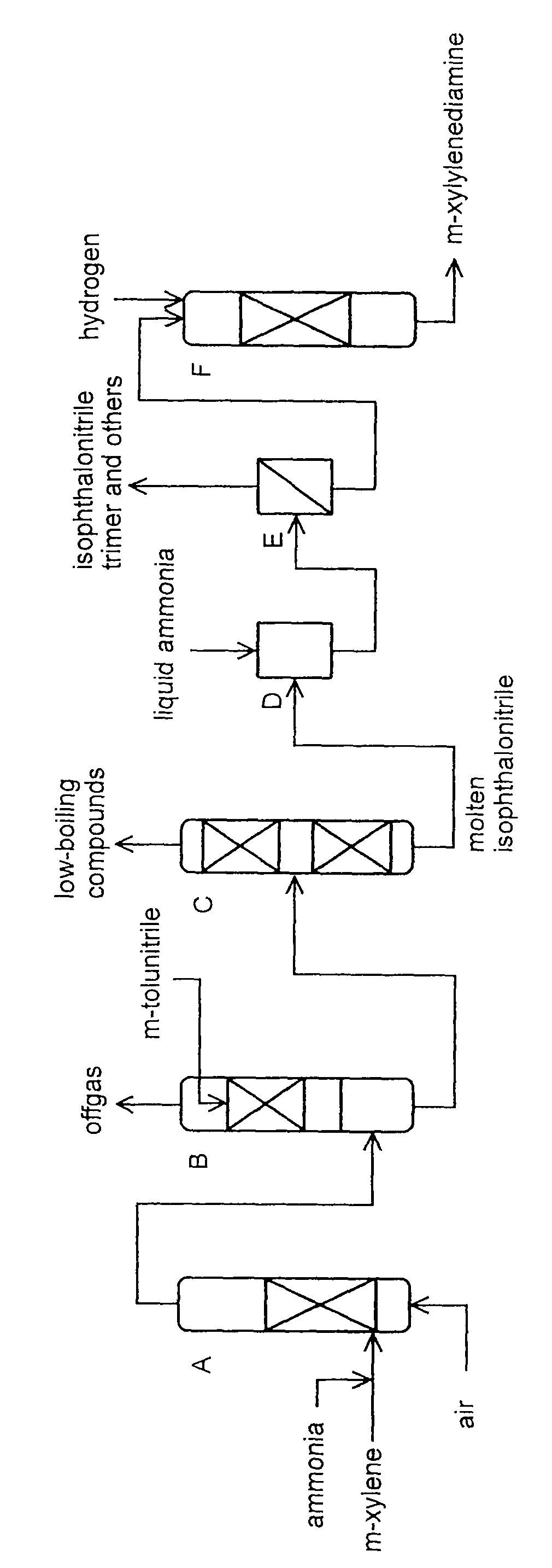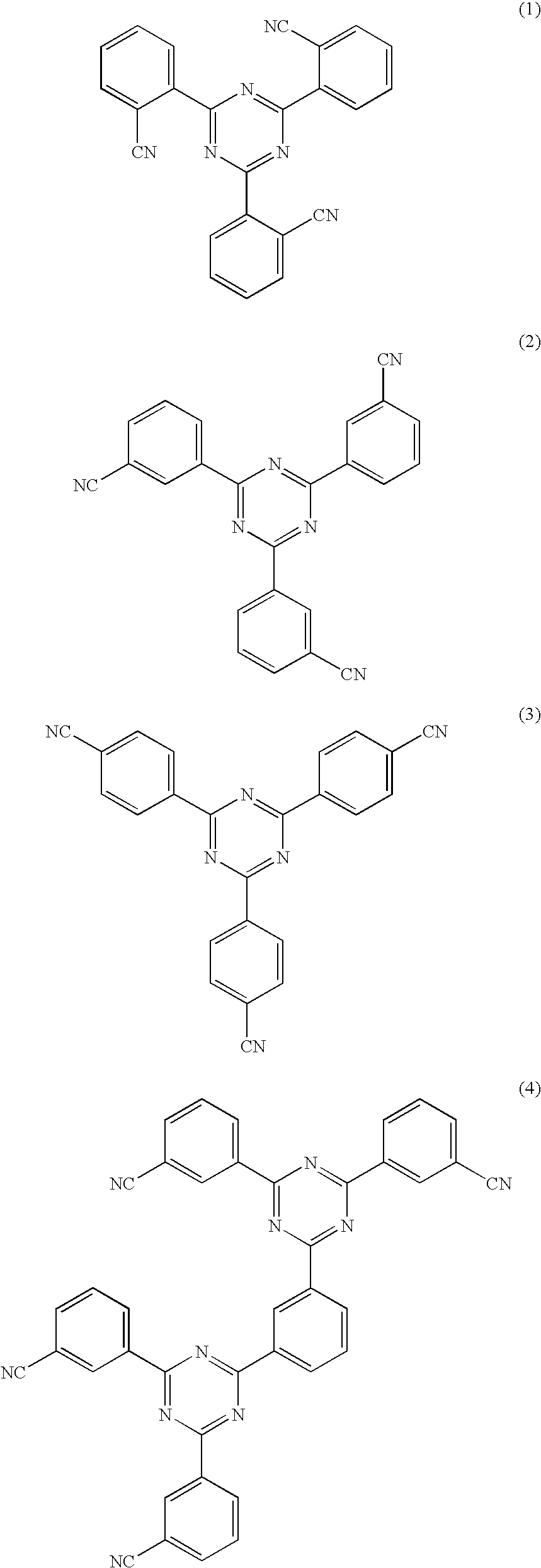Production method of xylylenediamine
a technology of xylylenediamine and production method, which is applied in the field of producing xylylenediamine, can solve the problems of inability to produce xylylenediamine stably, economic disadvantage of the method, and energy cost, and achieve the effects of increasing the yield of xylylenediamine in the hydrogenation of dicyanobenzene, increasing the selectivity of aminomethyl groups, and increasing the conversion of nitrile groups
- Summary
- Abstract
- Description
- Claims
- Application Information
AI Technical Summary
Benefits of technology
Problems solved by technology
Method used
Image
Examples
example 1
(1) Ammoxidation Step
Preparation of Ammoxidation Catalyst
[0065]To 229 g of vanadium pentoxide (manufactured by Wako Pure Chemical Industries, Ltd., special grade), 500 mL of water (distilled water) was added and then 477 g of oxalic acid (manufactured by Wako Pure Chemical Industries, Ltd., special grade) was dissolved in the resulting solution at 80 to 90° C. under heating and stirring, to obtain a vanadium oxalate solution. Separately, to 963 g of oxalic acid, 400 mL of water was added and heated to 50 to 60° C., and then, an aqueous solution of 252 g of chromic anhydride (manufactured by Wako Pure Chemical Industries, Ltd., special grade) in 200 mL of water was dissolved under vigorous stirring, to obtain a chromium oxalate solution. The vanadium oxalate solution was mixed with the chromium oxalate solution at 50 to 60° C. to obtain a vanadium-chromium solution. To the vanadium-chromium solution, an aqueous solution of 41.1 g of phosphorus molybdate (H3(PMo12O40).20H2O (manufactu...
example 2
[0074]The procedure of Example 1 was repeated up to the dissolution step except for using the molten isophthalonitrile (residence time at the bottom of distillation column: 180 min). By removing 0.20 g of 2,4,6-tris(3-cyanophenyl)-1,3,5-triazine as part of the filtered-off product per one hour, a filtrate was obtained at a rate of 279.7 g / h. The composition of the crude isophthalonitrile obtained by removing liquid ammonia from the filtrate is shown in Table 2.
[0075]The obtained isophthalonitrile was hydrogenated in the same manner as in Example 1 except for using the filtrate obtained in the above filtration. The reaction results and the total feeding amount of isophthalonitrile to the reactor at the time when the amount of 3-cyanobenzylamine in the hydrogenation product solution reached 0.10% by weight of the amount of m-xylylenediamine are shown in Table 3.
example 3
[0078]The procedure of Example 1 was repeated up to the dissolution step except for using an MX / liquid ammonia mixed solvent (MX: 20% by weight, liquid ammonia: 80% by weight) in place of liquid ammonia solvent and feeding the mixed solvent to the dissolution tank D at a rate of 6650 g / h. By removing 0.16 g of 2,4,6-tris(3-cyanophenyl)-1,3,5-triazine as part of the filtered-off product per one hour, a filtrate was obtained at a rate of 279.8 g / h. The composition of the crude isophthalonitrile obtained by removing MX and liquid ammonia from the filtrate is shown in Table 2.
[0079]The hydrogenation of isophthalonitrile was conducted in the same manner as in Example 1 except for continuously feeding the filtrate obtained in the above filtration to the reactor from its upper portion at a rate of 6.93 kg / h. The reaction results and the total feeding amount of isophthalonitrile to the reactor at the time when the amount of 3-cyanobenzylamine in the hydrogenation product solution reached 0....
PUM
| Property | Measurement | Unit |
|---|---|---|
| temperature | aaaaa | aaaaa |
| temperature | aaaaa | aaaaa |
| temperature | aaaaa | aaaaa |
Abstract
Description
Claims
Application Information
 Login to View More
Login to View More - R&D
- Intellectual Property
- Life Sciences
- Materials
- Tech Scout
- Unparalleled Data Quality
- Higher Quality Content
- 60% Fewer Hallucinations
Browse by: Latest US Patents, China's latest patents, Technical Efficacy Thesaurus, Application Domain, Technology Topic, Popular Technical Reports.
© 2025 PatSnap. All rights reserved.Legal|Privacy policy|Modern Slavery Act Transparency Statement|Sitemap|About US| Contact US: help@patsnap.com



